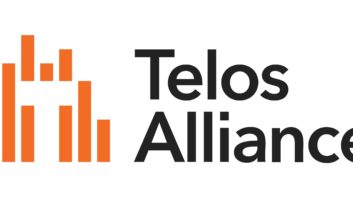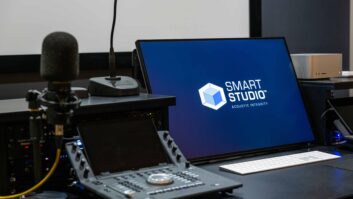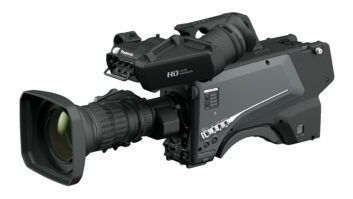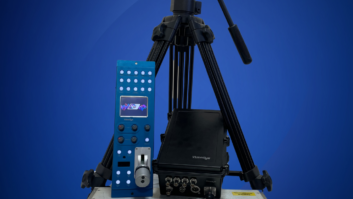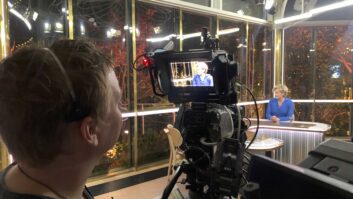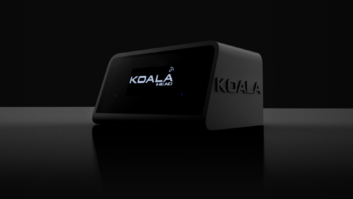RAI Television is to install Hitachi HD cameras in a three-year upgrade of its digital studios and facilities throughout Italy. By the end of the project, RAI will have taken delivery of more than 150 Hitachi SK-HD1000 studio, EFP and ENG cameras, writes David Fox.
The Italian state-owned public service broadcaster has budgeted some €5.5m for cameras and a further €1m for accessories (such as large lens adapters, wireless links or triax outputs). It selected Hitachi after conducting extensive trials of HD studio cameras and conducting a competitive tender.
“The competition to meet RAI’s advanced specifications was intense,” says Masahiko Kato, general manager of Hitachi Kokusai’s Global Business Division (pictured here at left with, L to R, Riccardo Rombaldoni (RAI), Shinij Nakamura (Hitachi) and Carmelo Catalano (CVE)). Hitachi eventually won out on price against Sony and Ikegami to meet RAI’s tender (Grass Valley had been part of the shortlist but dropped out after an initial tender). Hitachi’s Italian representative, CVE, will provide comprehensive technical support from its offices in Milan and Rome.
The key benefits of the Hitachi cameras were: quality (more than 1,100 TV lines resolution, better than 60dB signal-to-noise, modulation depth more than 60%, dynamic range more than 600% and f10 sensitivity); efficiency (16W power consumption); and price performance. “Also very important is its dockable design. The camera head is separate and you can dock it to wireless, triax, fibre or a P2 adapter,” explains Cemal Yilmaz, Hitachi’s general sales and marketing manager, broadcast and professional video. “RAI didn’t want to have to use different cameras for different applications.”
The SK-HD range offers the choice of native 1080i or 720p CCD options, can be fitted with a full studio adapter that enables the use of both hanger-type and bayonet-type lenses without removing the camera from the adapter, and has an easy-to-use camera control unit. It is relatively light (the camera head weighs 2.2kg), and for ENG use will weigh 4.4kg with a wireless, fibre or triax adapter or 5.7kg if fitted with the P2 AVC-I recorder. “Also, if there are any future requirements, the camera can be upgraded easily thanks to its FPGA [Field Programmable Gate Array] design.” The HD1000 should be upgradeable to 1080p 3Gbps specification with a single board change and a firmware upgrade.
More than 150 camera chains will be used as RAI upgrades its studio and OB operations to HD, probably starting with studios in Rome and Milan. The first deliveries are expected in the next month or two.
Fujinon is believed to have won the lens contract for the cameras, but the final papers hadn’t been signed as we went to press.
At NAB, Hitachi announced four new HD cameras. Three of the cameras are based on 3Gbps technology (the SK-HD2200 studio camera, SK-HD1200 handheld companion, and DK-HD200 PoV box-camera – all of which should be available by IBC) – while the fourth, the SK-HD2000, is a studio-body version of the SK-HD1000, and is available now.Hitachi will also launch a 3x slow motion camera at IBC.

